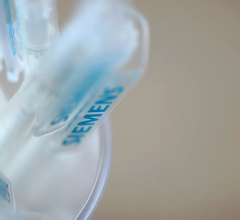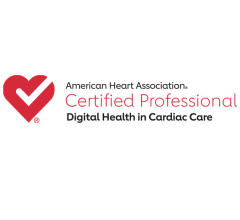
Getty Images
Jeff Rieder M.D., a cardiologist with Coastal Cardiology Charleston, clearly recalls the time when reporting was dictated. The problem with traditional transcription methods, he explains, is that it was easy to inadvertently omit important information. In addition, different providers could use different terminology, making the reports inconsistent and increasing the likelihood that important information could be overlooked when reading them.
Structured reporting streamlines the process by ensuring that everyone involved in a patient’s care is using the same terminology and systems for documenting patient information. Using standardized templates and form fields in the cardiovascular information system (CVIS), structured reporting ensures that all necessary data is inputted completely and consistently for every patient.
Making the Transition to Structured Reporting
Rieder has been using structured reporting for 15 years and personally found the transition from traditional transcription methods to structured reporting a simple matter. He attributes part of that ease of use to the VidiStar system. “It’s not like a structured word processor,” he said. “It’s more organized and complete, and it generates uniform information among all the providers and people who create and interpret the reports. Once you’re used to the technology, it’s a vastly simpler method of reporting.”
Matthew Martin, AAMI-certified lead biomedical equipment technician at Massena Hospital in New York, also found it to be an easy implementation. “We had an antiquated system for echo viewing and reporting, and we needed a replacement. I installed VidiStar, got it up and running, got it configured and transferring images and information back and forth — all in the same day.”
The Benefits of Structured Reporting
Structured reporting standardizes and aggregates all available information into a single CVIS database. This provides several key features that make it preferable to older methods of collecting and reporting data.
• Accessibility. The structured reporting application is browser-based and can be accessed on any web-enabled device. This permits the physician to review studies from virtually anywhere.
• Speed. Without the need for time-consuming transcription, a report is generated almost instantly after patient interaction. This not only reduces the physician’s workload, but also provides the means for faster and more accurate billing and reimbursement.
• Accuracy. The reports are more precise and of higher quality. By imposing standardized terminology on them, the software minimizes the use of jargon, ensuring that the collected information is consistent and complete, regardless of who input it.
• Consistency. Cardiologists no longer need to sift through multiple applications and then try to integrate that data on their own to get a complete picture of the patient. It’s all available in a single tool.
Structured reporting ensures that everyone’s speaking the same language, Rieder explained.
Bryan Burnside, radiology director at Merit Health Madison in Canton, Miss., adds, “VidiStar makes collaborating with other physicians seamless, aiding them in making accurate care decisions in tight windows of time.”
Not All Applications Are the Same
“VidiStar’s data is separated by pages and tabs. Because it’s more structured and less freeform, it provides greater uniformity,” said Rieder. VidiStar is also engineered to interface with electronic medical records (EMR) and hospital IT systems, including billing applications and picture archiving and communication systems (PACS). This provides a single-source repository of cardiac information from which comprehensive data analytics can be derived.
In addition, the viewer offers auto-calibration tools, measurements and annotation capabilities, and enables the cardiologist to view side-by-side multi-modal images without having to switch around among applications.
The ability to read complete, integrated studies from anywhere has a lot of appeal for Rieder — and benefits for patients as well. “I really don’t like getting behind,” Rieder said. “When I’m home or even on vacation, I always keep up. When I was on my anniversary trip, I read a follow-up echo on an older lady. Everything looked great and I called to tell her so. To this day, 12 years later, she still tells everybody that her doctor called her from Paris to say she was fine.”
Rieder says the VidiStar system continues to meet his organizational needs. “It’s portable, provides easy remote access, and presents consistent and comprehensive information,” he said. “Ultimately, it proved to be the best choice for us — even better than we expected. I use it every single day of my life.”
Editor's note: This blog is the third in a four-part series about the benefits of cardiovascular information systems. The first blog is here and the second blog is here, and the last article in the series is The Benefits of Data Analytics in Clinical Reporting.
To learn more visit https://hca.fujifilm.com/it


 November 14, 2025
November 14, 2025 









